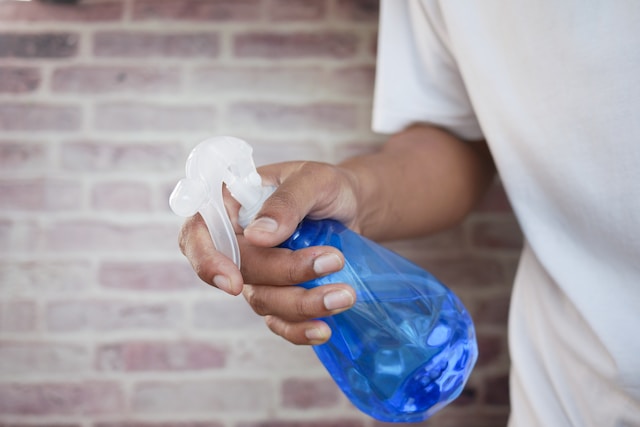Roaches: the champions of speedy reproduction and unstoppable resilience. But just how many eggs do roaches lay? And more importantly, how can we defend our homes against their relentless multiplication?
Prepare to embark on an eye-opening journey as we learn more about roach reproduction. Our blog is your passport to unlocking the secrets of their egg-laying prowess and gaining valuable insights into preventing infestations in Raleigh, North Carolina. We’ll reveal fascinating facts about roach reproduction that you never knew before!
But don’t worry; we’re not leaving you to battle these invaders alone. Innovative Pest Solutions is here to be your ally in the fight against multiplying roaches in Raleigh. Our team of experts has the knowledge and expertise to keep these unwelcome guests from turning your home into their breeding ground. Say goodbye to roach woes and hello to a pest-free haven!
Roach Reproduction
Roaches undergo incomplete metamorphosis, meaning their lifecycle has three stages: egg, nymph, and adult. Following egg-laying, the eggs incubate, develop, and hatch into nymphs.
Unlike other insects that experience a complete metamorphosis, cockroach nymphs appear highly similar to their adult counterparts, albeit without wings or reproductive organs. As they grow, the nymphs shed their exoskeletons and grow larger with each mold.
The maturation period may vary depending on species and conditions like temperature, humidity, and food availability. The complete lifecycle from egg to adult can take anywhere from a few weeks to several months.
Once they reach adulthood, roaches are ready to reproduce and continue the cycle. They have wings, are sexually mature, and are looking for mates. And so, the cycle repeats, with adults finding each other, mating, and initiating the process all over again.
How Many Eggs Do Roaches Lay?
Roaches are incredibly efficient when it comes to reproduction. Female roaches possess the remarkable ability to lay a significant number of eggs within a relatively short period.
So, how many eggs do roaches lay?
On average, a female roach can deposit anywhere from 16 to 50 eggs within a single ootheca—a protective casing designed to safeguard the developing roach embryos until they are ready to hatch.
The female roach carries the ootheca for incubation, providing warmth and moisture for proper development and guarding it until the eggs hatch.
Once the ootheca is formed, the female roach seeks a suitable location to deposit it. This strategy ensures that the eggs remain under the female’s care until they are ready to hatch, minimizing predation risks or environmental hazards. The ootheca is carefully attached to a secure surface, providing optimal conditions for the eggs to develop.
Roach oothecae are commonly found in concealed areas that offer a safe environment for the eggs. Cracks, crevices, and secluded corners are particularly favored by roaches for depositing their oothecae. These hiding spots provide protection against external disturbances and predators, increasing the chances of egg survival to maturity.
The eggs hatch upon reaching maturity, giving rise to nymphs resembling miniature versions of adult roaches. These nymphs undergo a series of molts, shedding their exoskeletons as they grow, eventually transitioning into adulthood. The rapid development and the potential for multiple oothecae throughout their lifetime contribute to roaches’ reputation as prolific breeders.
Preventing Roach Infestations
It is vital to prevent roach infestations from multiplying and taking over your home. No more wondering, “How many eggs do roaches lay?” At Innovative Pest Solutions, we’ve got effective strategies to help you keep those roaches at bay and maintain a pest-free environment.
Source Exclusion: Roaches love squeezing through tiny cracks and openings, making it crucial to address potential entry points in your home. At Innovative Pest Solutions, our team of experts conducts thorough inspections to identify those vulnerable areas where roaches might find their way in. We help fortify your home’s defenses against roach infestations by pinpointing and addressing these entry points.
Sanitation Practices: Proper cleanliness is critical in roach prevention. Roaches are attracted to food and water sources, so cutting off their access to these goodies is crucial. Promptly wipe up spills, keep kitchens crumb-free, and tightly seal food containers. By denying roaches’ favorite treats, you’ll make your home a lot less inviting.

Eliminating Harborage Areas: Roaches love hiding out in dark, cluttered spots. We’ll help you identify and eliminate potential hiding places like stacks of cardboard boxes, piles of newspapers, or messy storage areas. Reducing their cozy hangouts makes your home less hospitable.
Alongside these preventive measures, we use Integrated Pest Management (IPM) techniques for efficient roach control. IPM focuses on long-term solutions that address the underlying causes of pest problems rather than relying solely on chemicals. Our process starts with a thorough inspection to assess the infestation’s extent.
We’ll develop a customized treatment plan that includes targeted, safe, and effective pest control products based on what we find during the inspection. These treatments specifically target roaches while minimizing potential risks to humans, pets, and the environment.
Understanding roach reproduction and the number of eggs is crucial for effective pest control. At Innovative Pest Solutions, we’ve got the expertise and commitment to sustainable pest control—partner with us to access comprehensive services to prevent and address roach infestations.
Contact us today to eliminate roaches from your home! We’re your top source for trusted Raleigh pest control solutions!





